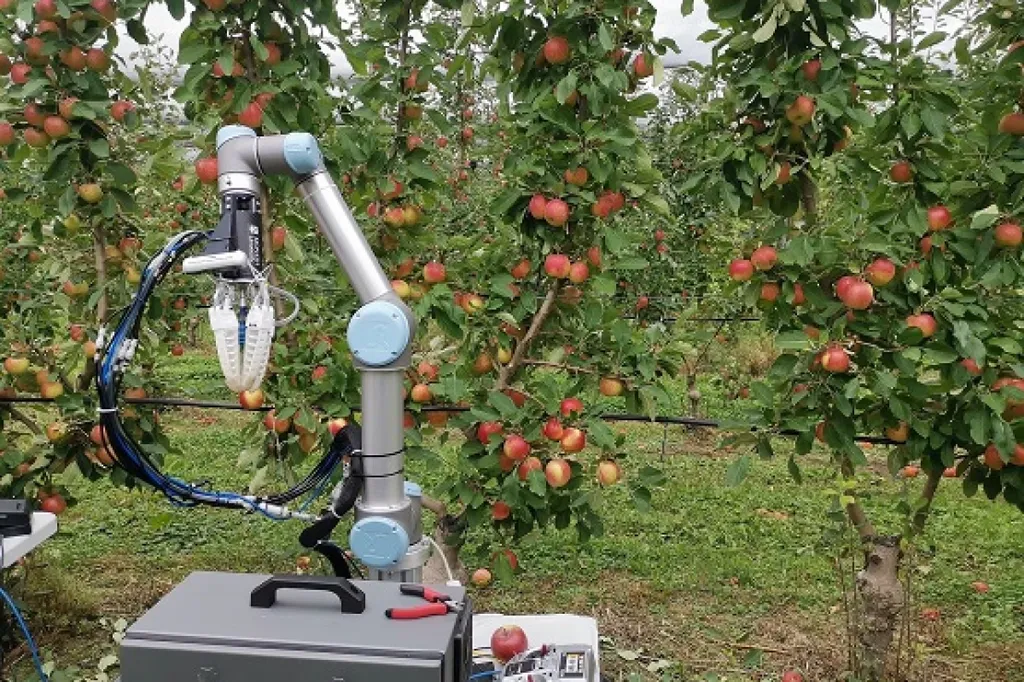In the ever-evolving world of agricultural technology, a groundbreaking study published in *Artificial Intelligence in Agriculture* is set to revolutionize the way we approach robotic harvesting. The research, led by Houkang Jiang from the School of Agricultural Engineering at Jiangsu University, introduces a multi-stage fusion framework designed to enhance the detection and 3D localization of occluded apples in unstructured orchard environments.
The study addresses critical challenges faced by current robotic harvesting systems, such as complex lighting, fruit occlusion, and fruit clustering, which significantly hinder accuracy. Jiang and his team propose a comprehensive solution that begins with adaptive image enhancement using the HSV color space to mitigate the effects of uneven lighting. This is followed by an improved Mask R-CNN with a dual-attention mechanism (SE-CBAM) to achieve scale-adaptive fruit segmentation under occlusion conditions.
One of the most innovative aspects of this research is the hierarchical point cloud purification strategy, which combines depth clustering and geometric feature analysis to remove interference from branches and leaves. This step is crucial for obtaining accurate 3D reconstructions of the fruits. The process culminates in a two-step RANSAC-LM spherical fitting algorithm that quickly and accurately recovers the 3D shape of the fruit from incomplete point clouds.
The results are impressive. The proposed method achieves Mask IoUs of 0.89, 0.82, and 0.65 under mild, moderate, and severe occlusion, respectively, with a 3D localization error as low as 0.42 cm and an overall processing frame rate of 20 FPS. In real orchard environments, the harvesting success rate under occlusion conditions reaches up to 82.7%, significantly outperforming traditional point cloud centroid and 2D positioning methods.
“This study provides an efficient, robust, and real-time deployable visual solution for fruit localization and robotic harvesting in complex orchard environments,” Jiang explains. The implications for the agriculture sector are profound. By improving the accuracy and efficiency of robotic harvesting, this technology can reduce labor costs, increase yield, and minimize waste. It also paves the way for more sustainable farming practices by enabling precision agriculture.
The commercial impact of this research is substantial. As the demand for automation in agriculture grows, the need for advanced perception and reconstruction technologies becomes increasingly critical. This study not only addresses these needs but also sets a new standard for future developments in the field.
Jiang’s work, published in *Artificial Intelligence in Agriculture*, represents a significant step forward in the integration of artificial intelligence and robotics in agriculture. It highlights the potential for technological innovation to transform traditional farming practices and improve overall productivity and sustainability.
As the agriculture sector continues to evolve, the insights and methodologies presented in this research will undoubtedly shape the future of robotic harvesting and precision agriculture. The journey towards fully automated and efficient farming systems has taken a significant leap forward, thanks to the pioneering work of Houkang Jiang and his team.

